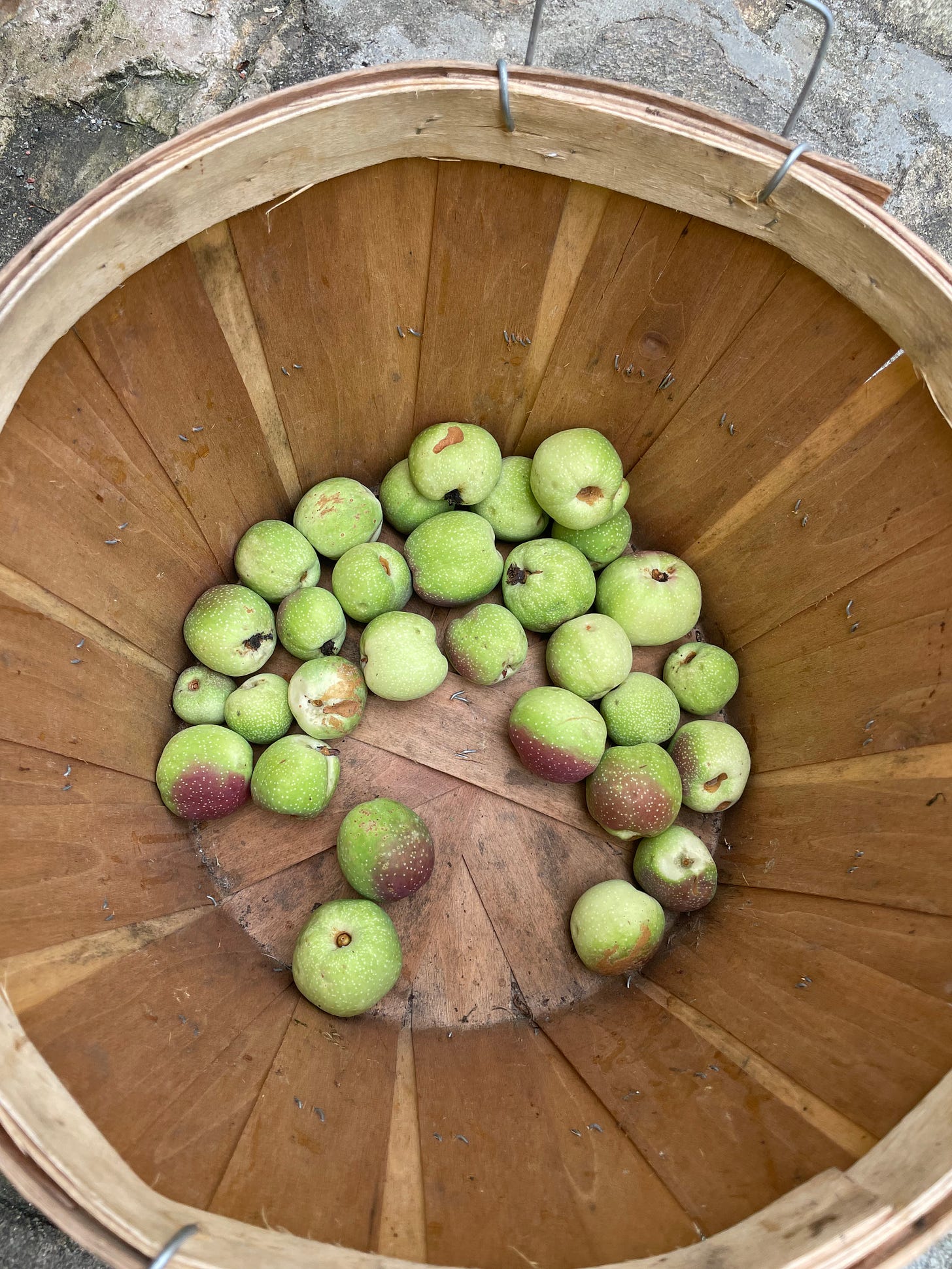What’s happening in the garden this week: July 21-27
A quiet week means time for weeding, tying and pruning. And figuring out what to do with our quince.
It’s been a fairly quiet week in the garden after a flurry of fall planting. You can read more about how I go about planning for the fall gardening season here.
Weeding
My no-dig garden has been pretty much weed free for the past three years. When I see something that doesn’t belong I try to pull it out on the spot to keep on top of things. The compost I spread in three of the beds earlier in the month did carry a fair number of tomato seeds that sprouted into tiny seedlings. This happens and usually means the compost didn’t get hot enough to kill the seeds. It’s no big deal. I have a horseshoe shaped hoe that gets under the weeds and pulls the roots out from the soil. It’s easy and quick and made more so because of the loose soil in the compost-rich beds.
Tying, staking and pruning
I made my weekly pass through the tomatoes to tie up the fast-growing vines, which are now stretching themselves to the top of and over the eight-feet high cattle panel fence behind the straw bales. I’ve been tying the vines espalier-style, spreading them laterally along the fence to give them space and air. I continued to prune unwanted suckers as well, hoping to keep the vines under control and focus the plants’ energy on their fruit.
I tied the peppers to the wooden stakes that I stuck in the ground alongside each plant. They’re about four-feet tall now and laden with peppers, so staking and tying keeps everything from collapsing onto the ground.
I’m growing honeydew melons up the trellis at the center of the garden and have been steering them up off the ground by fixing the vines to the support polls of the trellis with garden twine. They want to grow along the ground so this has been an ongoing process. One of the vines seems to have gotten the message and it’s now moving by itself up the trellis. I may have spotted a tiny melon too.
Raspberries
Our first year in Massachusetts good friends gave us a bunch of plants from their raspberry patch. They were the first things I planted here, and the raspberry bed is now three years old. It’s only about 15-20 feet long but last summer we harvested several quarts, enough to have raspberries for weeks with cereal in the morning, make two batches of raspberry sorbet and freeze berries for a pie that we made over the winter. The raspberries are an ever-bearing variety, which means they’ll fruit twice if pruned correctly – once in early summer and again in late summer, which is the time they produce more fruit. This week I pruned the canes that bore the first round of berries, cutting them to the ground. This gives more space to the new canes that have come up this year and will bear raspberries in about a month or so. The way ever-bearing raspberries work, these new canes will overwinter and provide early berries next year before dying off to make room for next year’s fresh growth. And so the cycle goes.
Quince
We have a quince bush in front of our house that was buried in weeds a couple of years ago. We’ve done some light pruning and given it space and light, and this summer we’ve been paid off with a couple dozen small quinces, each slightly larger than a golf ball or the size of a small apple. It’s difficult to know what to do with quinces since they’re hard, difficult to peel and very tart. Katie made a quince-apple pie last summer, and you can make quince jam and syrup as well. This year we're going to try to make a quince brandy. Stay tuned.
Previous updates:
What’s happening in the garden: July 14-20
What’s happening in the garden: July 7-13
What’s happening in the garden: June 30-July 6
What’s happening in the garden: June 23-30
What’s happening in the garden June 16-22
What’s happening in the garden: June 9-15





